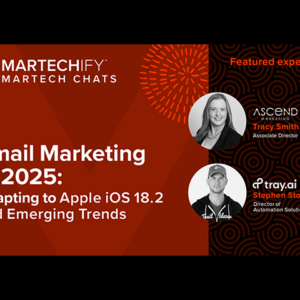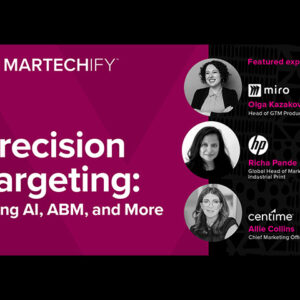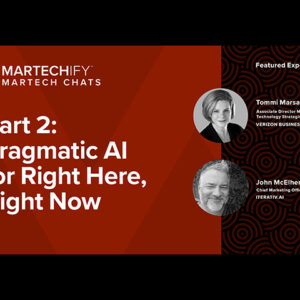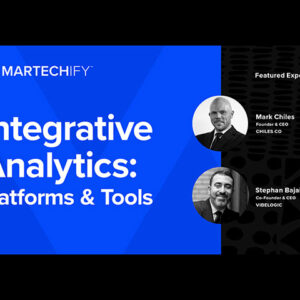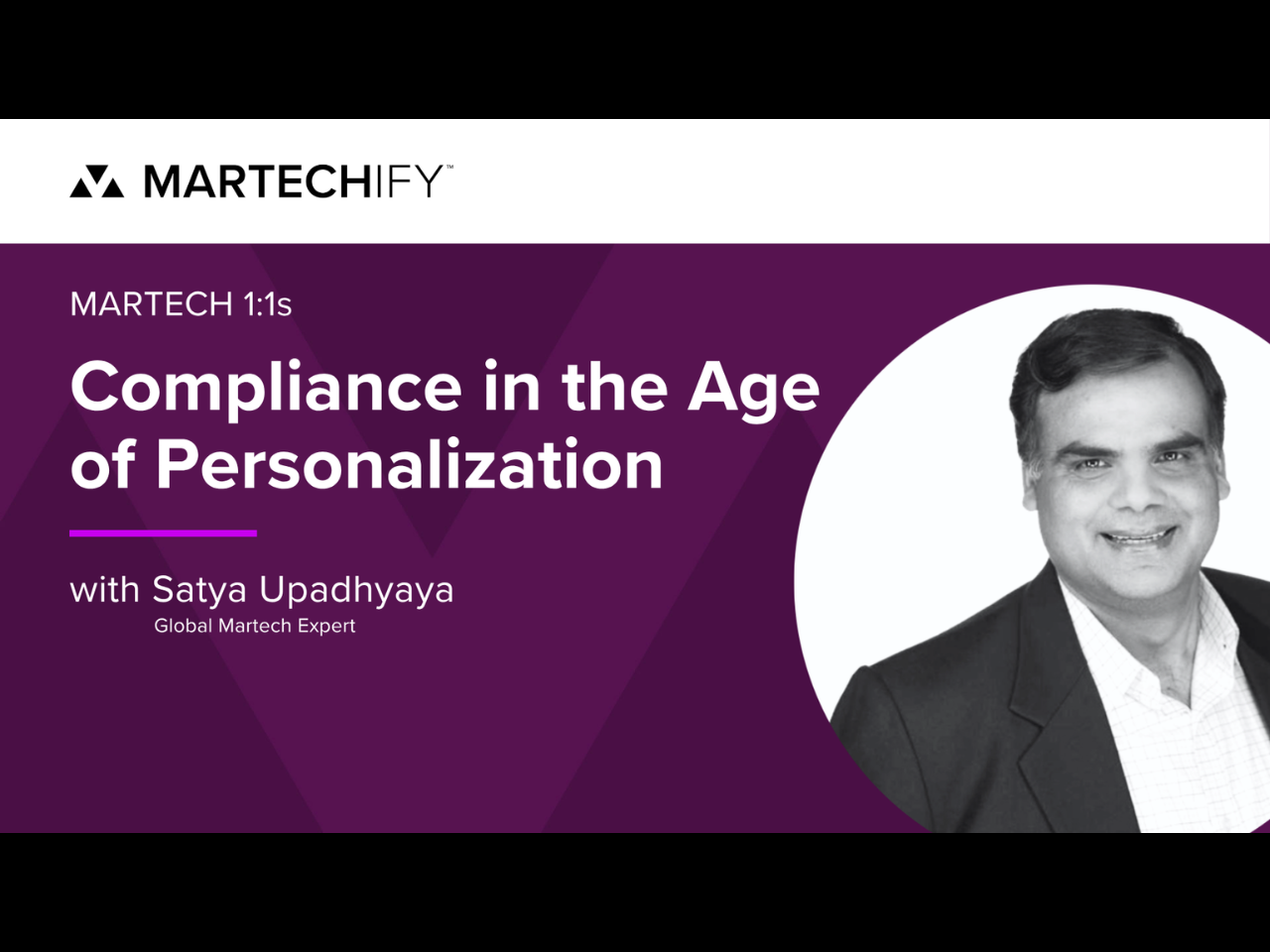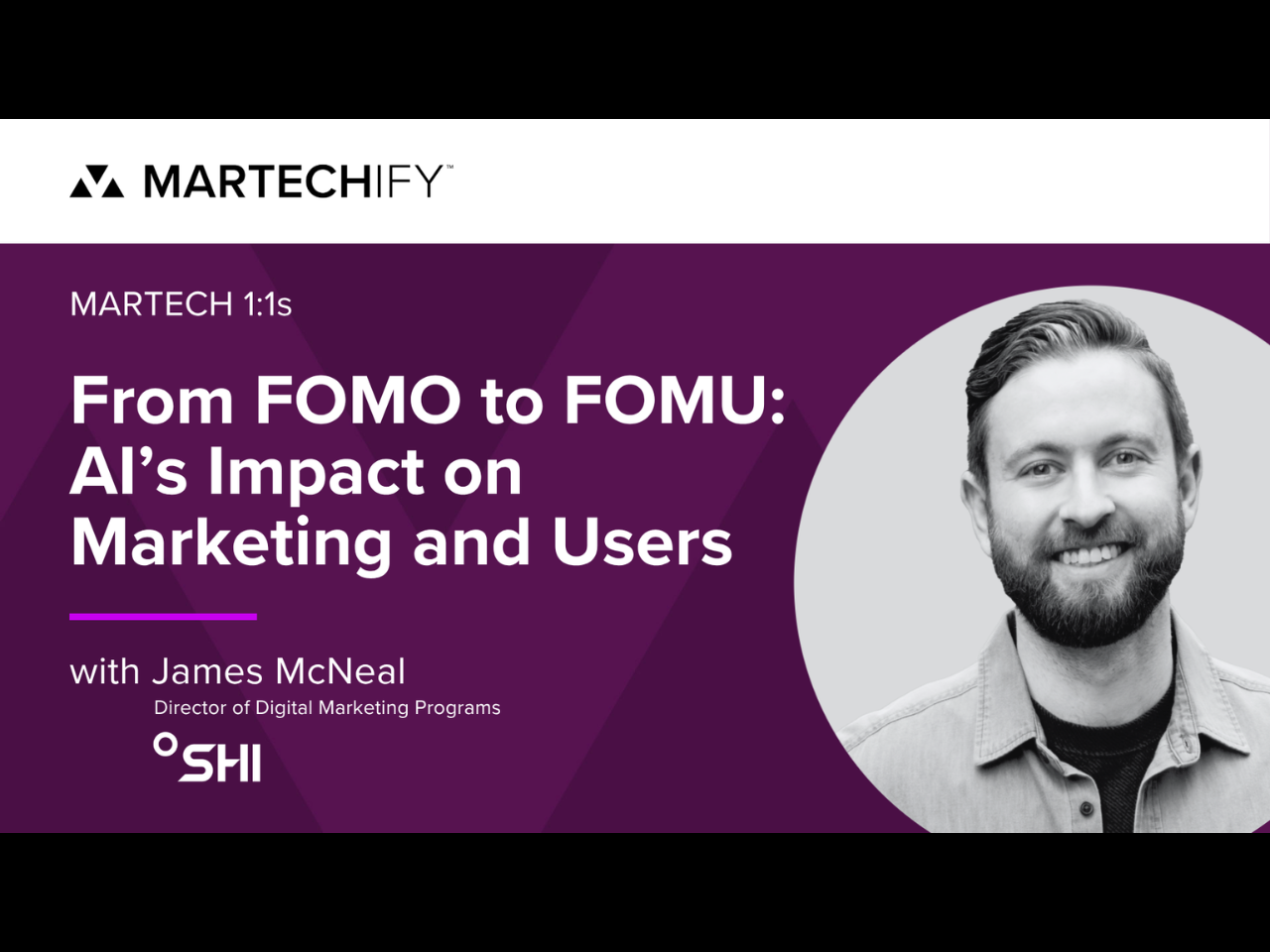How a Former LEGO Group Executive is Using AI to Revolutionize B2B Prospecting
- John Lyons, Fractional CMO
- AI and Automation, Lead Gen / Lead Mgmt, Strategy and Trends
“I started my one-person business this year from scratch,” John Lyons, fractional CMO of Human Hatstand, proclaims.
Despite the odds, John built a sophisticated AI-powered prospecting system that enables him to operate like a much larger organization.
Drawing on his experience at the LEGO Group and leading successful agencies, John has shown how small marketing teams can prospect and communicate with the efficiency of much larger ones.
Despite the odds, John built a sophisticated AI-powered prospecting system that enables him to operate like a much larger organization.
Drawing on his experience at the LEGO Group and leading successful agencies, John has shown how small marketing teams can prospect and communicate with the efficiency of much larger ones.
Building a foundation with smart prospecting tools
John’s journey into AI-enhanced prospecting began with Microsoft Copilot, a tool he chose over ChatGPT for its live search capabilities. Using Microsoft Copilot, John identified directories and lists of businesses aligned with his ideal customer profile (ICP).
“Back in my old agency days, I had a guy named Barry who was amazing at prospecting,” John recalls. “But when I saw what AI could do, I remember thinking, ‘I’ve just killed Barry’s job.’”
This foundational step—using AI to surface high-quality lead lists—forms the backbone of John’s system.
“Back in my old agency days, I had a guy named Barry who was amazing at prospecting,” John recalls. “But when I saw what AI could do, I remember thinking, ‘I’ve just killed Barry’s job.’”
This foundational step—using AI to surface high-quality lead lists—forms the backbone of John’s system.
Automating data collection and streamlining prospecting with AI
Once the prospects are identified, John leverages Browse AI, an AI bot that automates repetitive data extraction tasks. Browse AI allows him to record specific actions (e.g., extracting contact details) and replicate them across thousands of company profiles. This eliminates the need for manual data scraping, freeing up time for higher-value activities.
For LinkedIn prospecting, John uses a combination of LinkedIn Sales Navigator and EvaBot to extract insights about prospects. To ensure the data is clean and usable, he verifies email addresses through Hunter before storing everything in Google Sheets.
For LinkedIn prospecting, John uses a combination of LinkedIn Sales Navigator and EvaBot to extract insights about prospects. To ensure the data is clean and usable, he verifies email addresses through Hunter before storing everything in Google Sheets.
Focusing on high-quality leads in AI-powered prospecting
Unlike traditional outbound strategies that focus on mass outreach, John believes in targeting with precision.
“There aren’t 10,000 or 100,000 prospects that I’m suitable for. So I need to find those people and get them down to the hundreds, or maybe a thousand or two, and just deliver good stuff,” he explains.
This philosophy is critical for CMOs looking to avoid wasting resources on low-quality leads. By concentrating on quality, marketers can foster deeper relationships and drive better business outcomes.
“There aren’t 10,000 or 100,000 prospects that I’m suitable for. So I need to find those people and get them down to the hundreds, or maybe a thousand or two, and just deliver good stuff,” he explains.
This philosophy is critical for CMOs looking to avoid wasting resources on low-quality leads. By concentrating on quality, marketers can foster deeper relationships and drive better business outcomes.
Enterprise applications of AI-powered prospecting
While John developed his AI-driven system for his fractional CMO practice, its potential extends to businesses of all sizes. From small startups to enterprise-level B2B companies, his approach demonstrates how organizations can scale prospecting efforts while maintaining precision and efficiency.
John claims that any B2B company could implement this system. By customizing the tools to fit specific business needs and budgets, companies can streamline operations and potentially reduce the need for large business development representative (BDR) teams.
For example:
— Small companies can use cost-effective tools like Google Sheets, free versions of HubSpot, or lightweight CRMs to organize and manage leads.
— Larger enterprises can integrate more robust platforms like Salesforce or Clay to enhance automation and track complex sales journeys.
The key, John emphasizes, is to leverage AI for what it does best: automating mundane tasks to give human teams more time to focus on strategy and relationship-building.
John claims that any B2B company could implement this system. By customizing the tools to fit specific business needs and budgets, companies can streamline operations and potentially reduce the need for large business development representative (BDR) teams.
For example:
— Small companies can use cost-effective tools like Google Sheets, free versions of HubSpot, or lightweight CRMs to organize and manage leads.
— Larger enterprises can integrate more robust platforms like Salesforce or Clay to enhance automation and track complex sales journeys.
The key, John emphasizes, is to leverage AI for what it does best: automating mundane tasks to give human teams more time to focus on strategy and relationship-building.
Leveraging AI to amplify prospecting content: Insights from the "Bin Juice" series
John’s system extends beyond prospecting into content creation, where he’s developed a distinctly memorable approach. His “Bin Juice” video series showcases practical marketing advice with an unexpected twist—he delivers insights while sitting in front of virtual trash bins (or “rubbish bins,” as they say in the UK).
The result? A distinctly memorable series that stands out in the often-stuffy B2B marketing landscape. The visceral, almost unpleasant name “Bin Juice” serves a strategic purpose—it’s memorable. As John puts it, “You’re not going to forget it.” This combination of practical advice delivered with quirky humor creates content that cuts through the typical B2B clutter.
The setup is delightfully simple: John positions his chair in front of a green screen, adds a virtual background featuring trash bins, dons his signature gray cap (which accidentally became his brand mascot), and speaks directly into his iPhone camera. In one episode, he even pretends to have a conversation with a pigeon—a far cry from typical B2B content.
“There’ll be people out there that maybe will judge this guy who sat in front of the trash cans in a pair of shorts pretending to have a conversation with a pigeon,” John admits. “But that’s fine because I’m probably not going to be for you, and I’m probably not going to enjoy working with you. What I’m doing is creating a mindset that connects what I do with something interesting and fun and less serious because what I’m talking about is serious—I just don’t have to say it in a serious way.”
Using AI tools, John transforms each “Bin Juice” episode into multiple content pieces. Here is his multichannel content system:
1. The main video goes to LinkedIn and YouTube.
2. OpusClip breaks it into shorts for TikTok, YouTube Shorts, and LinkedIn.
3. Otter.ai creates transcriptions for captions and written articles.
4. The content feeds his email newsletter and LinkedIn articles.
The result? A distinctly memorable series that stands out in the often-stuffy B2B marketing landscape. The visceral, almost unpleasant name “Bin Juice” serves a strategic purpose—it’s memorable. As John puts it, “You’re not going to forget it.” This combination of practical advice delivered with quirky humor creates content that cuts through the typical B2B clutter.
The setup is delightfully simple: John positions his chair in front of a green screen, adds a virtual background featuring trash bins, dons his signature gray cap (which accidentally became his brand mascot), and speaks directly into his iPhone camera. In one episode, he even pretends to have a conversation with a pigeon—a far cry from typical B2B content.
“There’ll be people out there that maybe will judge this guy who sat in front of the trash cans in a pair of shorts pretending to have a conversation with a pigeon,” John admits. “But that’s fine because I’m probably not going to be for you, and I’m probably not going to enjoy working with you. What I’m doing is creating a mindset that connects what I do with something interesting and fun and less serious because what I’m talking about is serious—I just don’t have to say it in a serious way.”
Using AI tools, John transforms each “Bin Juice” episode into multiple content pieces. Here is his multichannel content system:
1. The main video goes to LinkedIn and YouTube.
2. OpusClip breaks it into shorts for TikTok, YouTube Shorts, and LinkedIn.
3. Otter.ai creates transcriptions for captions and written articles.
4. The content feeds his email newsletter and LinkedIn articles.
Balancing AI and human connection in lead generation strategies
Despite his enthusiasm for AI, John is adamant about maintaining a balance between automation and authenticity.
“Where I see the real value in AI is by automating the mundane tasks,” he explains. “I’m not a fan of using it to be creative, but for execution and scaling operations, it’s a game-changer.”
This focus on efficiency allows John to concentrate on high-value activities, such as:
— Building personalized relationships with prospects.
— Developing creative strategies tailored to client needs.
— Refining the ICP and ensuring alignment with business goals.
— Creating humorous content focused on practical marketing.
CMOs should view AI as a tool to enhance—not replace—their team’s creativity and strategic thinking.
“Where I see the real value in AI is by automating the mundane tasks,” he explains. “I’m not a fan of using it to be creative, but for execution and scaling operations, it’s a game-changer.”
This focus on efficiency allows John to concentrate on high-value activities, such as:
— Building personalized relationships with prospects.
— Developing creative strategies tailored to client needs.
— Refining the ICP and ensuring alignment with business goals.
— Creating humorous content focused on practical marketing.
CMOs should view AI as a tool to enhance—not replace—their team’s creativity and strategic thinking.
Actionable AI prospecting tips for CMOs
For marketing leaders looking to integrate AI into their prospecting and content strategies, John offers these actionable insights:
1. Define your ICP first: Before adopting any tools, get crystal clear on your ideal customer profile. This ensures your AI-driven efforts are targeted and effective.
2. Start with one tool at a time: Avoid the temptation to adopt multiple platforms at once. Instead, focus on implementing and mastering one tool before expanding your tech stack.
3. Measure quality, not quantity: Shift your metrics from volume-driven KPIs to those that reflect engagement, lead quality, and sales alignment.
4. Preserve the human touch: Use AI to handle repetitive tasks, but keep relationship-building and creativity firmly in the hands of your team.
1. Define your ICP first: Before adopting any tools, get crystal clear on your ideal customer profile. This ensures your AI-driven efforts are targeted and effective.
2. Start with one tool at a time: Avoid the temptation to adopt multiple platforms at once. Instead, focus on implementing and mastering one tool before expanding your tech stack.
3. Measure quality, not quantity: Shift your metrics from volume-driven KPIs to those that reflect engagement, lead quality, and sales alignment.
4. Preserve the human touch: Use AI to handle repetitive tasks, but keep relationship-building and creativity firmly in the hands of your team.
The future of AI-enhanced prospecting and lead generation
John’s story highlights how AI is reshaping the way marketers approach both efficiency and creativity.
The lesson is clear: AI should not replace the human elements that make marketing effective—it should enhance them. Tools like Microsoft Copilot, Browse AI, and Otter.ai can free up time and resources, allowing marketing leaders to focus on relationship-building, strategic thinking, and delivering real value to their audiences.
“My prediction is that AI is going to become more useful as a tool, but also the human voice and human creativity is going to be seen as a premium and something that can help people,” John says.
He continues, “AI, like processed bread, might become the norm, but there’s still going to be room for that kind of sourdough craft… What we know from craft, sourdough…, etc., [is that it] sells for a higher price. So you can have brand equity by having some more humanity.”
For CMOs ready to embrace this transformation, John’s blueprint offers a clear path forward. It’s about more than adopting the latest tools—it’s about aligning technology with a thoughtful, quality-first strategy that prioritizes human connection.
The future of B2B marketing lies in leveraging AI tools to balance automation with authenticity. By incorporating these technologies into your lead generation strategy, your team can focus on quality over quantity, uncovering meaningful opportunities and building customer relationships that last.
The lesson is clear: AI should not replace the human elements that make marketing effective—it should enhance them. Tools like Microsoft Copilot, Browse AI, and Otter.ai can free up time and resources, allowing marketing leaders to focus on relationship-building, strategic thinking, and delivering real value to their audiences.
“My prediction is that AI is going to become more useful as a tool, but also the human voice and human creativity is going to be seen as a premium and something that can help people,” John says.
He continues, “AI, like processed bread, might become the norm, but there’s still going to be room for that kind of sourdough craft… What we know from craft, sourdough…, etc., [is that it] sells for a higher price. So you can have brand equity by having some more humanity.”
For CMOs ready to embrace this transformation, John’s blueprint offers a clear path forward. It’s about more than adopting the latest tools—it’s about aligning technology with a thoughtful, quality-first strategy that prioritizes human connection.
The future of B2B marketing lies in leveraging AI tools to balance automation with authenticity. By incorporating these technologies into your lead generation strategy, your team can focus on quality over quantity, uncovering meaningful opportunities and building customer relationships that last.


